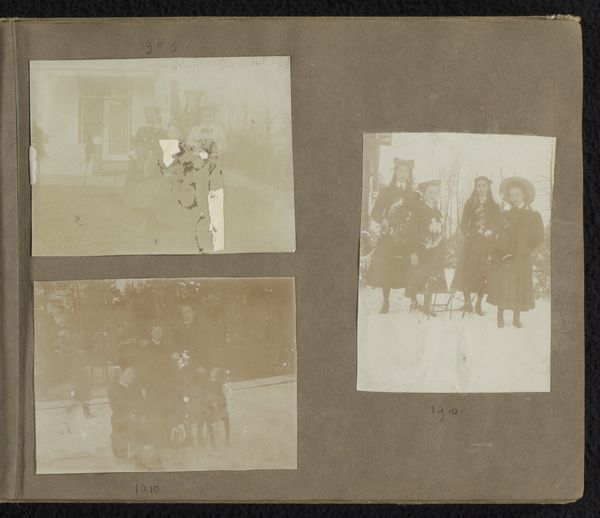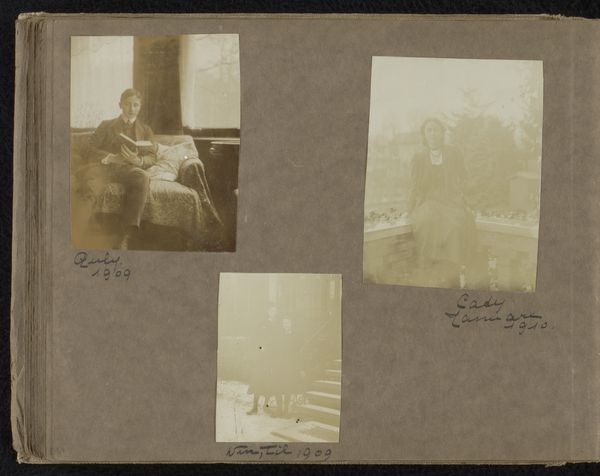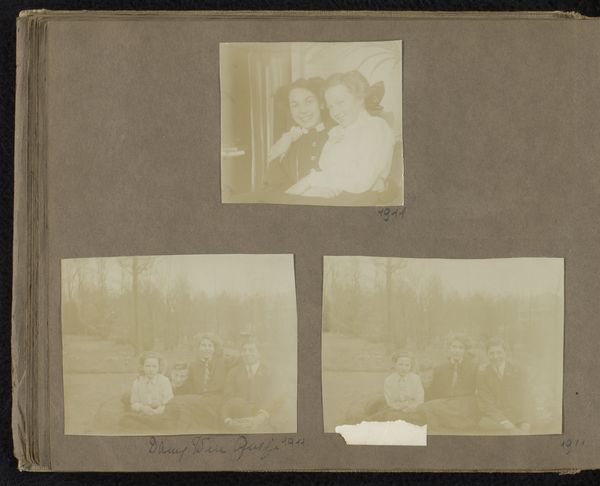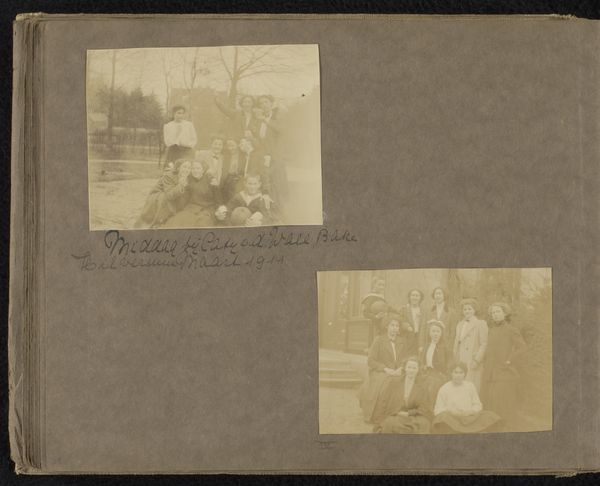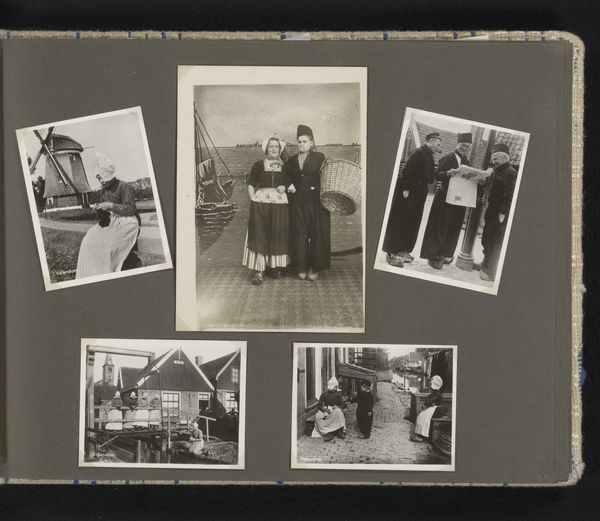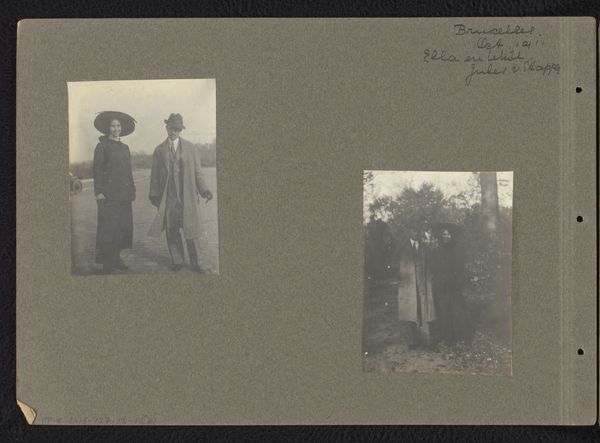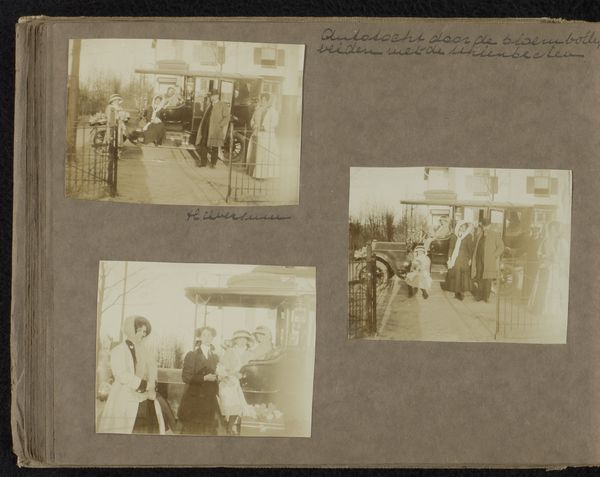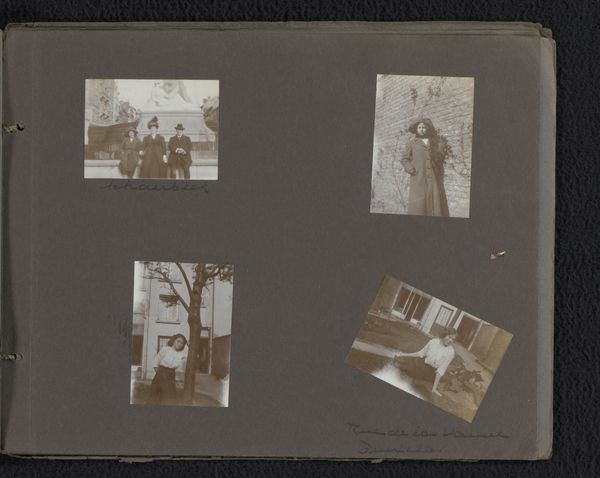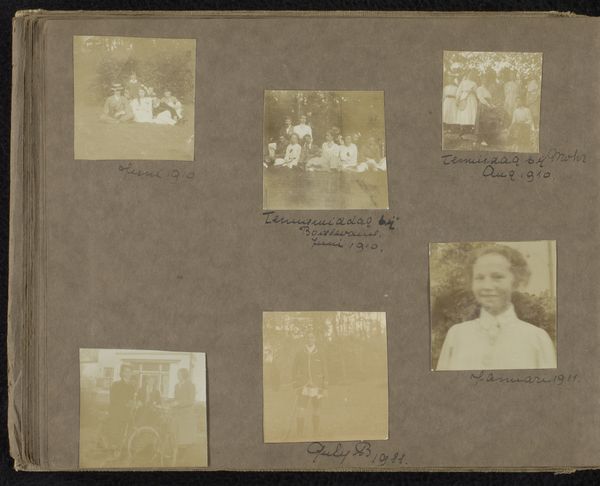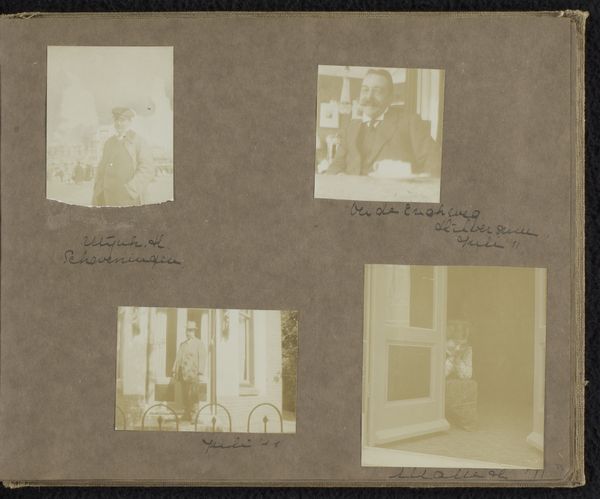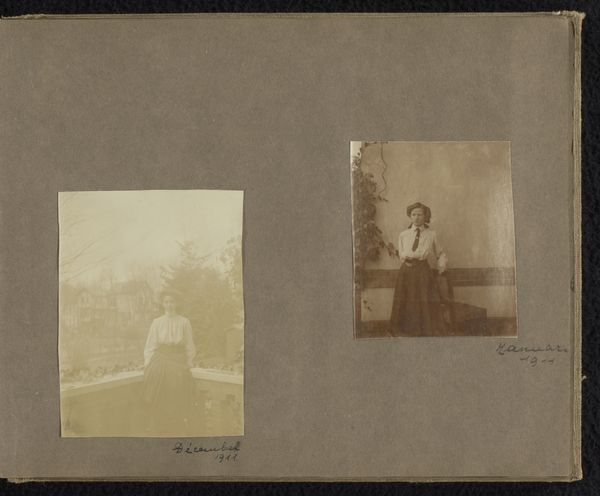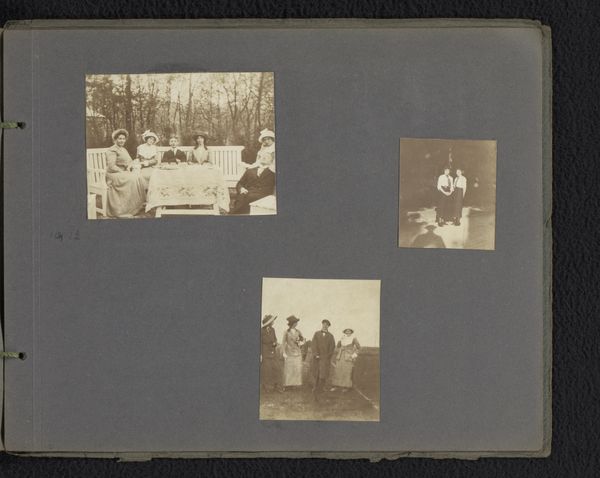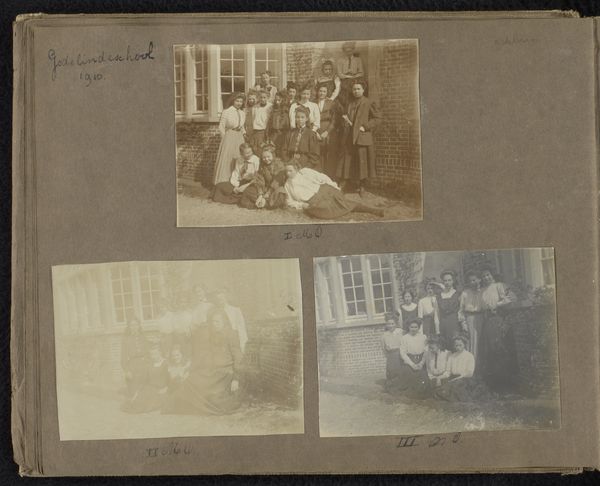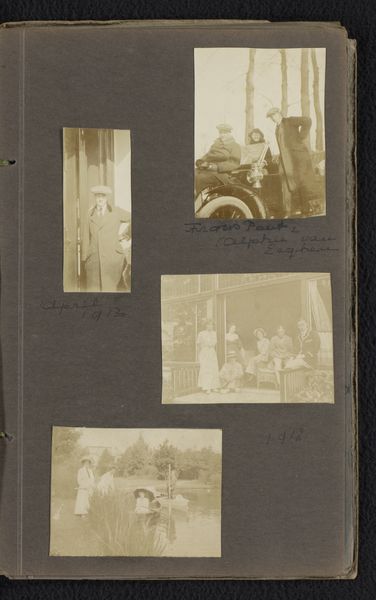
Twee groepsportretten van Loentje Onnen met Ella en Winny Uhlenbeck 1911
0:00
0:00
Dimensions: height 203 mm, width 253 mm
Copyright: Rijks Museum: Open Domain
Curator: This is “Twee groepsportretten van Loentje Onnen met Ella en Winny Uhlenbeck,” a photograph taken by Carolina (Loentje) Frederika Onnen in 1911. It’s part of a larger photo album. Editor: It has a solemn quality, a still life almost, despite being portraits of women. And the album context, with the photographs arranged within it—that speaks volumes about material and memory, doesn't it? Curator: Absolutely. Group portraits at the time often carried significant weight—they symbolized social bonds, familial ties, a carefully constructed identity. Placing them carefully in albums adds a layer of emotional archiving, shaping how future generations remember them. The hat’s worn by the women add a uniform quality while the stance and embrace symbolize unity and belonging. Editor: Look at the subtle differences in how the photographs were produced. The contrast is subdued; you can almost feel the texture of the photographic paper. And consider what's included, or rather what’s deliberately cropped out: the album’s dark pages act as an isolating frame, drawing the viewer's attention, but they also expose a method, and how the meaning accrues value with each photograph added and ordered in place. Curator: And that’s important to notice; framing and isolation often evoke different emotional reactions. The isolation enhances that sense of permanence, of freezing a specific moment in time, especially given the conventions of early 20th-century portraiture. But the uniform clothes signify social cues, don’t you agree? Editor: That's true, but it's precisely within the details of production and social customs of clothing we come to recognize the individual contributions. This photo creates something collectively new by uniting them as one—photography and dressmaking—by carefully posing these three women and placing the picture carefully within this dark album. Curator: I see your point. It all speaks to an intricate choreography, how selfhood and community is negotiated and carefully curated in personal spaces. It provides insights to our human need to document existence. Editor: Agreed. In this intimate space, we get to reflect on how those efforts were meticulously planned, as material objects that accumulate into records of family memory and history.
Comments
No comments
Be the first to comment and join the conversation on the ultimate creative platform.
